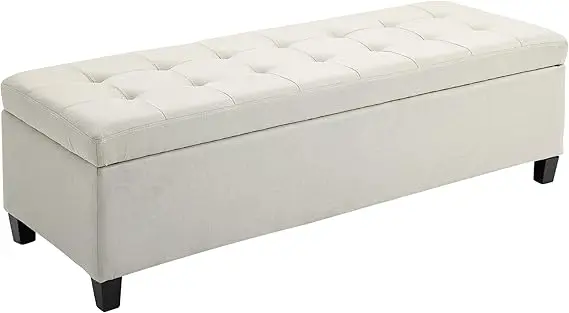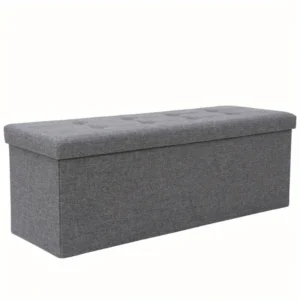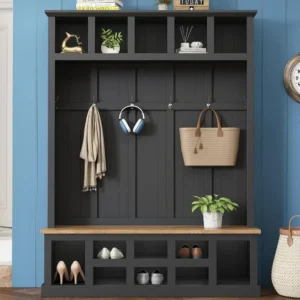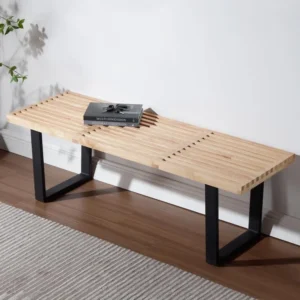Understanding Minimalism in Entryway Design
Minimalism isn’t simply about having fewer things—it’s an intentional approach to design that celebrates purpose and clarity. In entryway design, minimalism means creating a space where every item serves a clear function while contributing to an overall sense of visual harmony.
True minimalist design follows several key principles. First is intentionality—each piece is carefully chosen to fulfill a specific need. Second is functionality—items must be practical, not merely decorative. Third is an emphasis on clean lines and simple forms that create visual calm. Finally, minimalism values quality over quantity, focusing on fewer but better-made pieces that stand the test of time.
For entryways specifically, embracing minimalist design offers tangible benefits. The reduced visual noise creates a sense of calm the moment you step into your home. With fewer items cluttering the space, cleaning becomes significantly easier. The entryway also transforms into a more effective transition space between the outside world and your home’s interior. Perhaps most importantly, minimalist entryways enhance spatial awareness, making even small areas feel more open and welcoming.
Much of modern minimalist design draws inspiration from Japanese and Scandinavian design traditions, both of which value simplicity, natural materials, and functional beauty. These influences bring a sense of warmth through texture and natural elements that distinguish true minimalism from stark emptiness.
Environmental psychology research has consistently shown that visual clutter increases stress hormones, while organized, intentional spaces promote mental clarity and relaxation. A cluttered entryway filled with scattered shoes, piled mail, and tangled coats creates subtle anxiety each time you enter your home. In contrast, a minimalist entryway organization approach transforms this transitional space into a calming buffer between hectic outside environments and your peaceful home interior.
Essential Minimalist Entryway Furniture Pieces
Minimalist entryway furniture stands apart through its commitment to dual purpose, clean lines, and visual lightness. Each piece must earn its place through both function and form, supporting daily routines while maintaining an uncluttered aesthetic.
The truly essential furniture for a minimalist entryway typically includes just a few carefully selected pieces: a slim console table to serve as a landing zone, a bench or stool for putting on shoes, thoughtfully designed storage for coats and shoes, wall-mounted elements to maximize floor space, and perhaps a carefully placed mirror to enhance light and create a sense of spaciousness.
When selecting these pieces, consider your specific entryway’s constraints. A narrow hallway might benefit from wall-mounted solutions and a floating console, while a more spacious foyer might accommodate a bench with integrated storage. The key is resisting the temptation to fill the space—instead, allow each piece room to breathe visually.
These furniture elements should work together coherently, sharing design language through similar lines, complementary materials, or a consistent color palette. This cohesion helps create the sense of intentional simplicity that defines successful minimalist design.
Slim Console Tables: The Anchor Piece
The console table often serves as the anchor piece in a minimalist entryway, providing both a functional landing zone and a visual focal point. In keeping with minimalist principles, look for consoles with clean lines, unadorned surfaces, and a narrow profile, typically 12-15 inches (30-38 cm) deep—just enough space for essentials without protruding too far into walking paths.
Material choices significantly impact the console’s minimalist aesthetic. Light woods like oak, ash, or maple bring natural warmth while maintaining visual lightness. Matte metals provide architectural interest with slim profiles. Glass or acrylic options can seem to almost disappear, creating a floating effect for small spaces.
Height is a practical consideration, with most consoles standing between 28-32 inches (71-81 cm) tall—comfortable for quickly dropping keys or mail when entering. Width should be proportional to your wall space, though even narrow entryways can often accommodate consoles as slim as 24 inches (61 cm) wide.
Several console styles maintain minimalist principles while offering subtle variations:
- Floating consoles mount directly to the wall, eliminating legs and maximizing visible floor space—ideal for creating the illusion of more room
- Single-drawer consoles provide discreet storage for small items while maintaining a clean silhouette
- Waterfall edge designs, where the top surface seems to flow seamlessly into the legs, offer visual continuity
- Metal frame consoles with minimal tops provide architectural interest while feeling visually light
A well-chosen console pairs naturally with other entryway elements—place a mirror above, tuck a small stool underneath, or position a bench alongside. When decorating entryways with clean lines, remember that the console should provide just enough surface for everyday essentials without becoming a clutter magnet.
Minimalist Seating Solutions: Benches and Stools
A place to sit while putting on or removing shoes is one of the most practical additions to any entryway. In minimalist design, seating solutions focus on clean silhouettes, visual lightness, and often incorporate dual functionality.
Minimalist benches typically feature:
– Simple, straight lines without ornate details
– Raised profiles with negative space underneath
– Limited or no armrests to maintain visual openness
– Natural materials with clear grain patterns or simple upholstery
Material choices significantly impact the bench’s minimalist appeal. Natural woods provide warmth and texture while maintaining simplicity. Metal frames paired with simple seat surfaces create architectural interest. For upholstered options, choose solid neutral fabrics with minimal patterning.
Size should be proportional to your space, with most entryway benches ranging from 36-48 inches (91-122 cm) wide. For very small entryways, consider simple bench styles for minimal decor that maintain function without overwhelming the space.
When choosing between storage and non-storage options, consider your specific needs:
Storage benches offer:
– Hidden compartments for shoes, bags, or seasonal items
– Clean external appearance that conceals contents
– Typically more substantial visual weight
Simple seating provides:
– Greater visual lightness with space underneath
– Often a smaller footprint
– Usually lower cost
For extremely space-constrained entries, consider these alternatives:
– Folding stools that can be tucked away when not in use
– Wall-mounted flip-down seats that disappear when not needed
– Nesting stools that can be pulled out only when required
Small entryway benches with careful proportions can transform even the most compact spaces into functional entries. Similarly, modern entryway benches with clean lines often embody minimalist design principles through their straightforward construction and uncluttered appearance.
Wall-Mounted Solutions: Shelves, Ledges, and Hooks
Wall-mounted storage represents one of the purest expressions of minimalist design philosophy—it provides essential function while preserving valuable floor space. These solutions literally elevate storage, creating visual breathing room below.
The benefits of vertical storage in minimalist design extend beyond practical space-saving. Wall-mounted elements:
– Create clean, architectural lines that complement minimalist aesthetics
– Allow for precise placement at optimal heights for different users
– Provide visual boundaries without heavy furniture pieces
– Can be installed exactly where needed for maximum function
Minimalist shelves for entryways typically feature:
– Clean, straight lines without ornate brackets or supports
– Minimal thickness (often appearing to float)
– Limited depth (typically 6-8 inches/15-20 cm) to avoid protruding into walkways
– Simple materials like natural wood or powder-coated metal
Hook systems maintain visual simplicity through:
– Unadorned, functional designs
– Rhythmic spacing for visual order
– Consistent heights or intentional arrangements
– Limited material palette (typically single metal finishes or natural wood)
Consider these wall-mounted options for different entryway needs:
– Single floating shelves positioned at eye level for keys, mail, and small essentials
– Minimalist hook rails with clean profiles for coats and bags
– Picture ledges repurposed for holding sunglasses, wallets, or decorative items
– Integrated shelf-and-hook combinations that provide multiple functions
– Wall panels with adjustable components that can evolve with changing needs
When planning wall-mounted solutions, consider appropriate heights for household members (typically 48-60 inches/122-152 cm for hooks) and weight capacity based on what you’ll store. Installation should secure into wall studs or use appropriate anchors for heavier items.
These vertical elements naturally complement floor-based furniture like minimalist benches for small entryways, creating complete solutions that maximize both function and visual calm.
Coat and Outerwear Storage: Minimalist Approaches
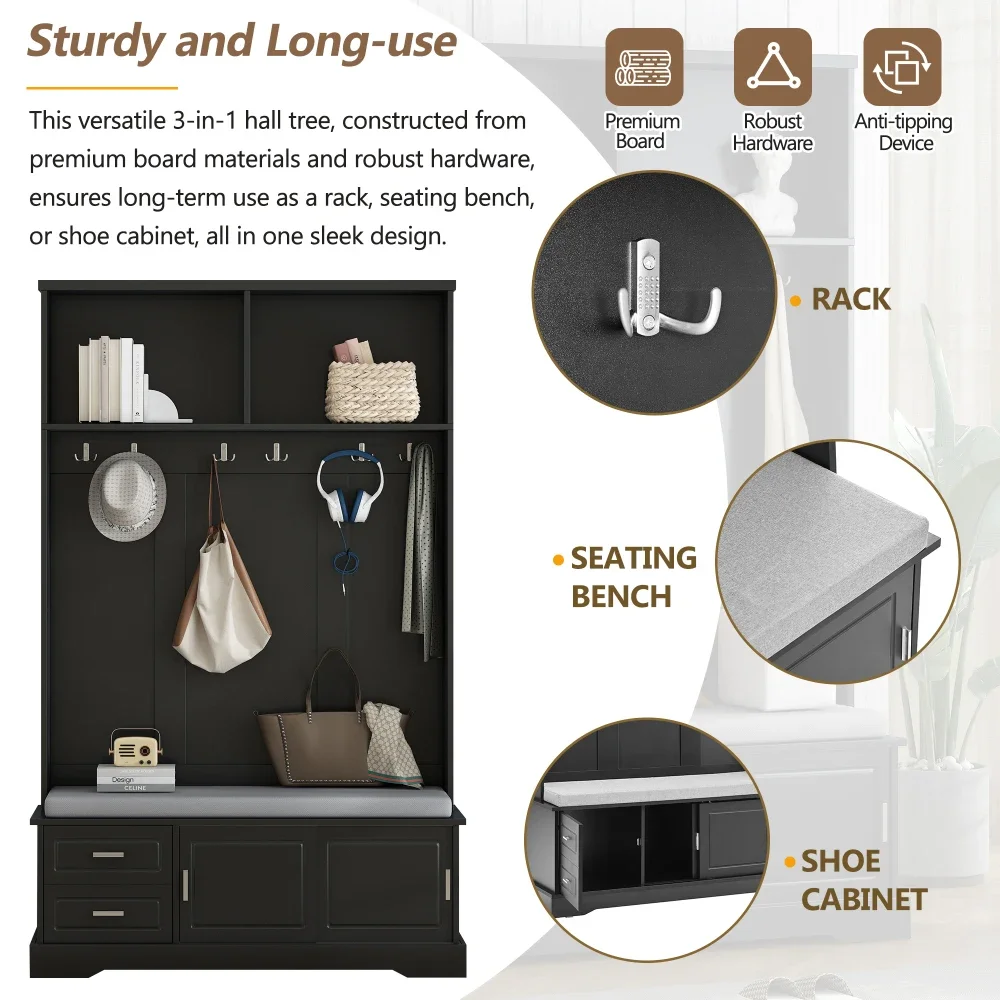
Effective coat storage represents perhaps the most critical challenge in maintaining a minimalist entryway, as outerwear tends to create visual bulk and disorder. The minimalist approach focuses on containing and organizing these items while maintaining clean lines and visual calm.
Minimalist coat storage generally follows two distinct strategies:
Architectural display—treating carefully selected coat storage as a design element:
– Sculptural freestanding coat stands with limited “branches”
– Linear wall-mounted racks with clean profiles
– Individual hooks arranged in geometric patterns
– Simplified hall trees with integrated bench seatingConcealed storage—hiding coats behind clean facades:
– Slim cabinets with flat-front doors
– Sliding panels that cover wall-mounted hooks
– Built-in closets with minimalist door hardware
– Behind-door hook systems that utilize otherwise unused space
Material selections significantly impact the minimalist appeal of coat storage. Look for:
– Natural woods with clear finishes that showcase grain patterns
– Powder-coated metals in neutral tones (black, white, or metallics)
– Combinations that create subtle contrast through texture rather than color
For households with seasonal variation in outerwear needs, consider:
– Modular systems that can expand or contract as needed
– Rotating seasonal items to off-site storage during off-seasons
– Dual-purpose pieces that adapt to changing needs
Entryway hall trees with clean designs provide efficient vertical solutions, often combining hooks with bench seating or shoe storage. Similarly, benches with hooks and storage represent the epitome of space-efficient design, addressing multiple entryway needs in a single cohesive piece.
The most successful minimalist coat storage solutions anticipate real-world use patterns, providing adequate capacity for your specific household while maintaining the clean aesthetic that defines minimalist design.
Shoe Storage Solutions: Keeping Footwear Organized and Out of Sight
Shoe clutter presents perhaps the most common challenge to maintaining a minimalist entryway. Footwear tends to accumulate haphazardly, creating both visual disorder and physical obstacles. Effective minimalist shoe storage solutions address this challenge through thoughtful containment and organization.
Minimalist shoe storage approaches typically fall into two categories:
Hidden storage that completely conceals footwear:
– Cabinets with flat-front doors that reveal organized interiors
– Bench seating with concealed compartments underneath
– Slim cabinets with tilt-out or pull-down doors designed specifically for shoes
– Under-stair solutions in split-level entriesVisibly organized storage that transforms shoes into ordered elements:
– Simple open shelving with geometric arrangement
– Minimalist shoe racks with clean lines
– Cubbies with consistent spacing and alignment
– Shoe storage that doubles as architectural elements
Material and design considerations should maintain the minimalist aesthetic:
– Consistent finishes that complement other entryway pieces
– Clean hardware that minimizes visual interruption
– Simplified forms without decorative elements
– Quality construction that prevents sagging or warping over time
When determining capacity needs, consider:
– Number of household members and their typical footwear count
– Seasonal variations requiring different types of shoes
– Frequency of rotation (daily-use shoes vs. occasional wear)
– Space for guests’ footwear during entertaining
Dedicated shoe storage benches provide dual functionality in limited space, offering both seating and organization. For complete solutions tailored specifically to entry areas, shoe storage benches for entryways often include features like water-resistant materials and proper ventilation for wet or snowy conditions.
The most successful minimalist shoe storage maintains the entryway furniture with shoe compartments in proportion to your actual needs—neither too limited to be practical nor excessively large for your typical usage.
Mirrors: Functional Beauty for Minimalist Entryways
Mirrors serve dual purposes in minimalist entryways—they provide practical functionality for last-minute appearance checks while visually expanding the space through light reflection. Their simple forms can also serve as artistic elements that enhance the overall aesthetic.
Characteristics of minimalist mirrors include:
– Clean, simplified frames or frameless designs
– Absence of ornate detailing or complex shapes
– Quality construction with precision edges
– Thoughtful proportion to surrounding wall space
Shape considerations contribute significantly to the mirror’s impact:
– Round mirrors soften the typically straight lines of minimalist furniture
– Rectangular mirrors echo architectural elements for cohesion
– Arched mirrors add subtle organic curves within minimalist parameters
– Geometric forms create intentional visual interest
For placement, consider both functional and aesthetic factors:
– Position at eye level for practical use (typically center at 60-65 inches/152-165 cm)
– Allow adequate distance for full or partial reflection as space permits
– Consider reflection content—what will the mirror capture and amplify?
– Use placement to bounce natural light deeper into the space
Size guidelines depend on your entryway dimensions:
– Small entryways: 18-24 inches (46-61 cm) diameter or width
– Medium entryways: 24-36 inches (61-91 cm) diameter or width
– Large entryways: 36+ inches (91+ cm) diameter or width
Some minimalist mirrors incorporate subtle functional elements without compromising simplicity:
– Thin ledges for small essentials
– Nearly invisible hooks on frames
– Backlit options for additional illumination
– Anti-fog features for climate transitions
Mirrors naturally complement console tables, creating classic pairings where the mirror reflects and expands the carefully curated surface below. The mirror’s placement should create balance with other elements while maintaining proper proportions to surrounding wall space.
Analyzing Your Space: Measurements and Considerations
Before selecting minimalist entryway furniture, a thorough assessment of your actual space prevents costly mistakes and ensures proportional, functional choices. This analytical approach aligns perfectly with minimalist philosophy—understanding exactly what you have before determining what you need.
Begin with comprehensive measurements:
– Total wall lengths available for furniture placement
– Floor space dimensions from wall to opposite obstruction
– Ceiling height (particularly important for tall pieces or hanging items)
– Door swing radius (typically 30-36 inches/76-91 cm)
– Window locations and dimensions
– Existing architectural features (moldings, vents, switches)
Consider traffic flow patterns specific to entryways:
– Primary pathways through the space (typically 36 inches/91 cm minimum)
– Secondary access routes to closets or adjacent rooms
– Gathering points where multiple people might congregate
– Transition spaces where movement changes direction
Account for door operations and clearances:
– Entry door swing radius (mark the full arc on a floor plan)
– Interior door movements affecting furniture placement
– Minimum clearances for comfortable passage (36 inches/91 cm recommended)
– Safety margins around door handles and light switches
Evaluate existing light sources and their impact:
– Natural light entry points and patterns throughout the day
– Fixed lighting locations and illumination patterns
– Areas that remain shadowed or overly bright
– Opportunities for additional lighting if needed
A helpful visualization technique uses painter’s tape to outline potential furniture placements directly on the floor, allowing you to test traffic patterns and visualize spatial relationships before purchasing.
Understanding your specific space constraints helps identify the most appropriate modern minimalist benches for small spaces or other furniture scaled appropriately for your entryway’s unique dimensions.
Defining Your Functional Needs: Personalization
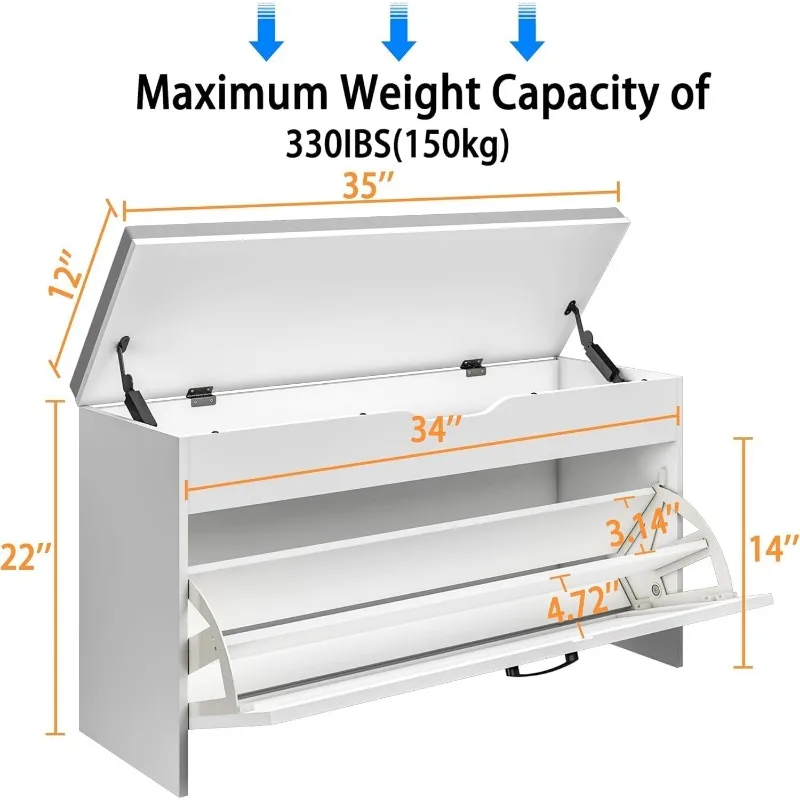
While minimalist design emphasizes simplicity, successful minimalist entryways must still address your household’s specific functional requirements. This personalization process ensures your space remains practical while maintaining minimalist aesthetic principles.
Begin by identifying your household’s specific entryway usage patterns:
– How many people regularly use the space?
– What are the peak usage times and potential bottlenecks?
– Are there specific accessibility considerations for any users?
– How long do people typically spend in the entryway?
Assess storage requirements through detailed inventory:
– Daily essentials (keys, phones, wallets, bags)
– Regularly used outerwear (coats, jackets, scarves)
– Footwear categories and quantities
– Seasonal items requiring rotation
– Special items like pet leashes, children’s backpacks, or sports equipment
Consider climate and seasonal factors:
– Weather protection needs (umbrella storage, boot trays)
– Seasonal clothing volume variations
– Special requirements for rain or snow management
– Humidity considerations for material selections
Evaluate lifestyle factors that might influence design:
– Work-from-home vs. commuting patterns
– Children’s independence levels and height considerations
– Pet-related entryway activities
– Frequency of entertaining guests
When space constraints force prioritization, consider:
– Must-have functions vs. nice-to-have options
– Items that can be relocated elsewhere
– Multi-functional solutions that address multiple needs
– Rotation systems for seasonal items
Finding the right balance between minimalist foyer function and style involves honest assessment of your daily habits and needs. The most successful minimalist entryways aren’t generic showpieces—they’re carefully tailored environments that simplify your specific daily transitions while maintaining visual calm.
Material Selection for Minimalist Entryways
Material choices profoundly impact both the aesthetic and practical success of minimalist entryways. The right materials contribute to visual simplicity while providing necessary durability for this high-traffic area.
Common minimalist materials include:
Woods:
– Light varieties (oak, ash, maple) create airy, Scandinavian-inspired spaces
– Darker options (walnut, mahogany) add warmth and grounding
– Bamboo offers sustainable properties with clean grain patterns
– Look for natural finishes that highlight grain rather than glossy coatings
Metals:
– Matte black creates architectural definition
– Brushed stainless steel provides modern sophistication
– Warm brass or copper adds subtle interest
– Powder-coated options in neutral tones maintain simplicity
Other materials:
– Concrete elements bring industrial minimalist appeal
– Glass creates visual lightness and reflection
– Quality synthetic materials can provide durability and consistency
– Natural stone offers organic texture within minimalist parameters
The minimalist color palette typically emphasizes:
– Whites and creams for brightness and visual expansion
– Soft neutrals (grays, taupes, beiges) for subtle warmth
– Black accents for definition and contrast
– Natural material colors as the primary palette elements
Texture becomes particularly important in minimalist spaces where color variation is limited:
– Visible wood grain provides natural interest
– Woven natural fibers add tactile warmth
– Subtle fabric textures enhance simple upholstery
– Material contrasts create interest without complexity
Durability considerations for entryway conditions include:
– Scratch and scuff resistance for furniture bases
– Water and stain resistance for horizontal surfaces
– UV stability for areas with direct sunlight
– Structural integrity for weight-bearing pieces
When selecting wood entryway benches, consider how the natural characteristics of different wood species contribute to both aesthetics and longevity. Each material choice should reflect both your visual preferences and practical requirements for this hardworking space.
Multi-Functional Furniture: Smart Solutions for Limited Space
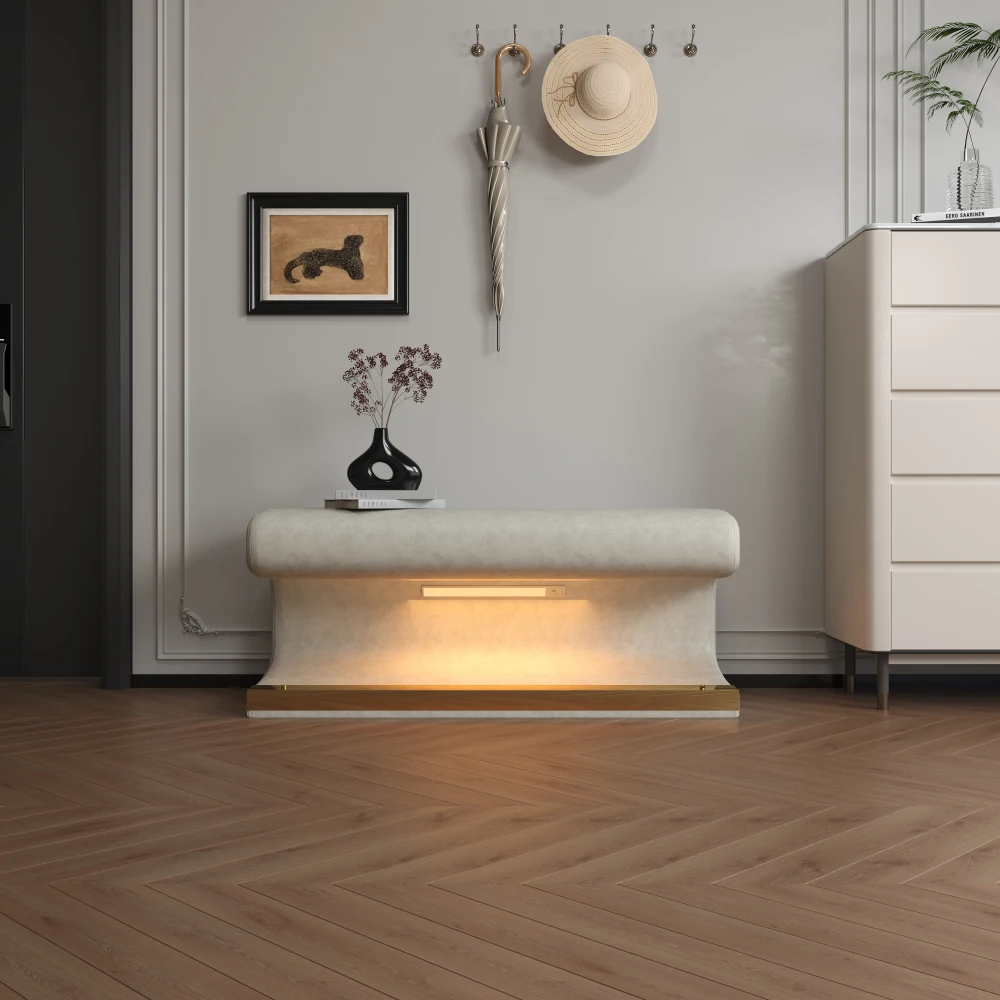
Multi-functional furniture represents minimalism at its best—addressing multiple needs with fewer objects. These space-efficient solutions maintain visual simplicity while maximizing practical utility, particularly valuable in smaller entryways.
Key multi-functional approaches include:
Seating + Storage Combinations:
– Benches with hidden compartments under lift-up seats
– Stools with concealed interior storage
– Ottomans that double as shoe storage and seating
– Stepped designs that provide both seating and display surfaces
Vertical Space Maximizers:
– Wall-mounted cabinets that include mirrors on doors
– Hook systems with integrated shelving above
– Hall trees that combine seating, storage, and hanging space
– Modular wall panels with customizable components
Convertible and Adaptable Pieces:
– Consoles with fold-out or pull-out surfaces
– Nesting furniture that can expand when needed
– Adjustable-height pieces that serve multiple functions
– Modular units that can be reconfigured as needs change
Hidden Storage Innovations:
– Mirror cabinets that conceal small essentials
– Wall panels that slide to reveal hidden storage
– Furniture with secret compartments for valuables
– Dual-sided access pieces that serve multiple areas
The space efficiency of multi-functional furniture is measurable—a bench with shoe storage underneath might require 6 square feet instead of the 10+ square feet needed for separate bench and shoe rack. This 40% space savings makes minimalist design not just aesthetically pleasing but practically superior for smaller homes.
Entryway benches with storage exemplify this efficient approach, providing both seating and organization in a single footprint. The best designs maintain clean lines despite their dual functionality, preserving the visual calm essential to minimalist spaces.
For additional inspiration, exploring various modern bench styles for small spaces reveals how designers continually innovate within minimalist parameters to create furniture that works harder without looking complicated.
Quality and Longevity in Minimalist Furniture
The minimalist philosophy of “less but better” makes quality assessment particularly important. When you own fewer pieces, each must perform flawlessly and last longer. This investment perspective aligns perfectly with minimalism’s sustainability aspects.
Quality in minimalist furniture manifests through:
Superior Construction Methods:
– Solid wood joinery (dovetail, mortise and tenon) rather than just glue
– Metal connections that are welded rather than just bolted
– Reinforced stress points in areas of regular use
– Precision alignment of all components
Material Integrity:
– Solid woods or quality core materials with genuine veneers
– Properly seasoned woods that resist warping
– Metal gauge appropriate to the structure’s needs
– Hardware rated for intended weight capacity
Finish Excellence:
– Even application without drips or inconsistencies
– Multiple layers for proper protection
– UV-resistant properties to prevent fading
– Appropriate finish for the furniture’s function
When assessing quality before purchase, look for:
– Weight appropriate to materials (too light often indicates hollow components)
– Drawer operation that’s smooth without sticking
– Doors that align perfectly when closed
– Even gaps between all components
– Stability without wobbles or flexing
– Complete finishing even on non-visible areas
From a financial perspective, quality minimalist pieces often represent better long-term value. A well-constructed bench costing $400 that lasts 15+ years ($27/year) proves less expensive than replacing a $150 bench every 3 years ($50/year)—while also reducing environmental impact and the hassle of frequent replacement.
Caring for quality pieces extends their lifespan:
– Regular dusting with appropriate materials
– Prompt attention to spills or damage
– Periodic maintenance of moving parts
– Seasonal cleaning appropriate to materials
Styling Your Minimalist Entryway: Less is More
Styling a minimalist entryway requires thoughtful restraint—each element should serve both functional and aesthetic purposes without creating visual clutter. This curated approach creates a sense of intentional welcome.
The “one in, one out” rule provides practical guidance: for every new item added to the entryway, another should be removed. This maintains visual balance and prevents incremental clutter accumulation.
When selecting decor elements, apply these criteria:
– Does it serve a practical purpose beyond decoration?
– Does it maintain visual simplicity through clean lines or forms?
– Does it complement rather than compete with the essential furniture?
– Does it contribute to the overall sense of calm?
Functional styling elements might include:
– A simple ceramic tray for daily essentials
– A single sculptural hook for guest use
– A streamlined umbrella stand with architectural appeal
– A quality boot tray with minimalist design
Visual balance in minimalist spaces requires attention to:
– Negative space as an intentional design element
– Symmetry or intentional asymmetry in arrangements
– Height variation without busyness
– Textural contrast within a limited color palette
Seasonal refreshes can maintain interest while honoring minimalist principles:
– Rotate a single display item rather than adding multiple seasonal decorations
– Update textiles seasonally (heavier textures in winter, lighter in summer)
– Incorporate natural elements appropriate to the season (branches, leaves, etc.)
– Adjust lighting to complement seasonal changes in natural light
Common styling mistakes that disrupt minimalist calm include:
– Too many small objects creating visual noise
– Competing patterns or textures creating visual confusion
– Neglecting proper organization systems, leading to daily clutter
– Decorative elements without purpose or intention
For additional inspiration, exploring modern entryway furniture ideas can provide context for how furniture and styling elements work together to create cohesive minimalist entryways.
Lighting for Minimalist Entryways
Proper lighting transforms minimalist entryways from merely simple to sophisticatedly serene. Thoughtful illumination enhances functionality, highlights architectural features, and creates appropriate mood for this transitional space.
Minimalist lighting fixtures typically feature:
– Clean geometric forms without ornate details
– Limited visible components or exposed bulbs
– Quality materials with subtle finishes
– Proportional scale to surrounding space
The most effective entryway lighting incorporates layers:
Ambient Lighting:
– Recessed ceiling fixtures with clean trim profiles
– Simple flush-mount ceiling lights with minimal ornamentation
– Track lighting systems with streamlined heads
– Indirect lighting that washes walls with even illumination
Task Lighting:
– Focused illumination at the mirror for appearance checks
– Directed light near storage areas for visibility
– Subtle under-cabinet lighting for console surfaces
– Motion-activated options for convenience
Accent Lighting:
– Minimal wall sconces that create architectural interest
– Subtle picture lights highlighting selected wall elements
– LED strips integrated into architectural features
– Directional spots emphasizing textural elements
Natural light maximization strategies include:
– Reflective surfaces that bounce daylight deeper into the space
– Translucent door inserts or sidelights for borrowed light
– Mirror placement that captures and multiplies available daylight
– Window treatments that control light without blocking it
Smart lighting options particularly suited to entryways include:
– Motion sensors for hands-free operation when entering with bags
– Programmable systems for time-of-day appropriate lighting
– Dimmable fixtures for mood adjustment
– Vacation settings for security
Light temperature significantly impacts the entryway’s feel—warmer tones (2700-3000K) create welcoming ambiance, while cooler temperatures (3500-4000K) improve task visibility. The best solutions often combine both for balanced illumination.
Entryway Bench with Back, Modern Entryway Bench, Shoe Bench for Entryway
Price range: $463.13 through $474.44 Select options This product has multiple variants. The options may be chosen on the product pageShoe Storage Bench for Entryway
$459.02 Select options This product has multiple variants. The options may be chosen on the product pageEntryway Bench with Shelf Storage, Shoe Bench for Entryway, Shoe Storage Bench
$194.08 Select options This product has multiple variants. The options may be chosen on the product pageCorner Entryway Bench, Entryway Bench with Cushion, Modern Entryway Bench, Shoe Bench for Entryway
$476.34 Select options This product has multiple variants. The options may be chosen on the product pageBench with Hooks and Storage, Entryway Hall Tree, Mudroom Bench with Cubbies, Mudroom Bench with Shoe Storage
$818.38 Select options This product has multiple variants. The options may be chosen on the product pageModern Entryway Bench, Wood Entryway Bench, Wood Mudroom Bench
$497.69 Select options This product has multiple variants. The options may be chosen on the product page
Maintaining Your Minimalist Entryway
Maintaining a minimalist entryway requires establishing systems and habits that prevent clutter accumulation and preserve the space’s intentional design. These practices transform minimalism from an aesthetic choice to a sustainable lifestyle.
Daily maintenance routines might include:
– A five-minute reset at day’s end, returning items to designated homes
– One-touch rule for mail and papers (handle once, then file/discard)
– Immediate hanging of coats and bags rather than temporary draping
– Quick sweep or vacuum to maintain clean lines
Seasonal rotation systems help manage changing needs:
– Designated storage for off-season items elsewhere in the home
– Scheduled swap-outs aligned with weather patterns
– Limited “active” items in the entryway at any given time
– Periodic evaluation of what’s truly needed in current conditions
Decluttering routines prevent gradual accumulation:
– Weekly removal of items that belong elsewhere
– Monthly assessment of entryway contents
– Quarterly deeper organization of storage components
– Annual purge of unused or unnecessary items
Effective drop zone management includes:
– Clearly defined homes for everyday essentials
– Limits on quantity (e.g., only three pairs of shoes per person)
– Visible reminder systems for temporary items
– Overflow plans for busy periods or special circumstances
The most successful popular minimalist benches with storage incorporate maintenance planning into their design, with features like removable liners, washable cushions, and accessible components that encourage regular cleaning and organization.
Family involvement strategies might include:
– Height-appropriate storage accessible to all users
– Clear visual systems that don’t require explanation
– Regular family reset times with shared responsibility
– Positive reinforcement for maintaining systems
These maintenance approaches transform minimalist entryway design from a temporary state to a sustainable lifestyle, ensuring your space continues to provide calm functionality over time.
Where to Find Quality Minimalist Entryway Furniture
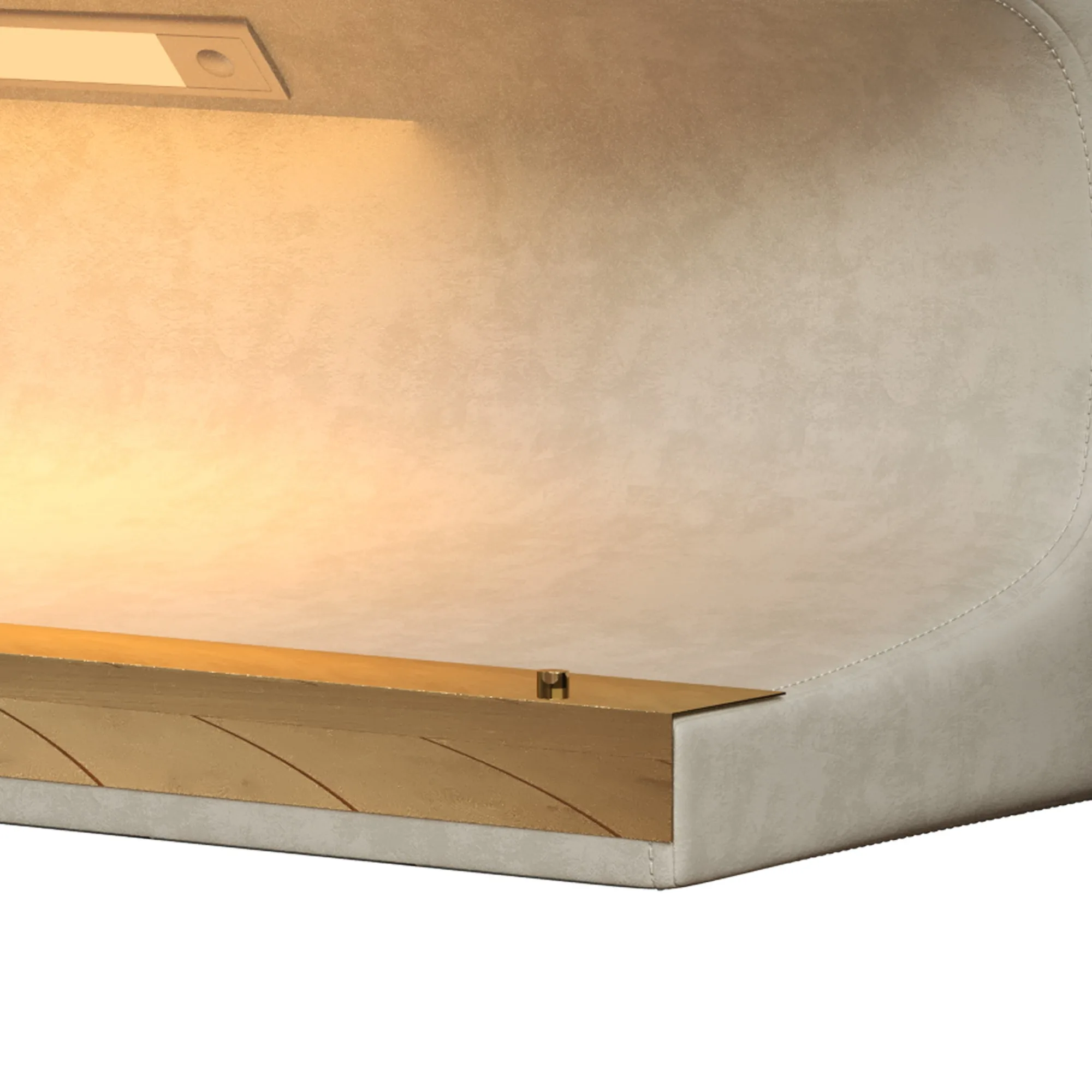
Finding furniture that truly embodies minimalist principles requires targeted searching. The best sources typically share certain characteristics that align with minimalist values.
Retailers specializing in minimalist design often feature:
– Curated collections rather than overwhelming options
– Clear material and construction information
– Emphasis on design heritage and philosophy
– Transparent pricing reflecting quality construction
– Streamlined customer experience
When searching online, these keywords can yield better results:
– “Architectural minimalist furniture”
– “Clean line entryway furniture”
– “Scandinavian entryway design”
– “Japanese-inspired furniture”
– “Functional minimalist storage”
For remote purchasing, evaluate products through:
– Material specifications (solid wood vs. particleboard, metal gauge)
– Joinery descriptions (dovetail, mortise and tenon, welded)
– Finish details (hand-rubbed, multi-layer, water-resistant)
– Weight capacity specifications
– Assembly requirements and hardware quality
– Return policies and customer reviews
Budget considerations span different price points:
– Entry level: Focus on fewer, simpler pieces with clean designs
– Mid-range: Look for solid construction with better materials
– High-end: Expect exceptional craftsmanship and designer pedigrees
Vintage and second-hand sources often yield unique minimalist pieces:
– Mid-century furniture with clean lines and functional design
– Previously high-end pieces at more accessible prices
– Solid wood construction that exceeds contemporary standards
– Unique materials or craftsmanship difficult to find in mass production
Brands like Nested Goods specialize in furniture that blends minimalist design principles with practical functionality. Their focus on quality materials and thoughtful construction aligns perfectly with the “less but better” philosophy of true minimalism.
Is Minimalist Entryway Furniture Right for You?
While minimalist entryway design offers many benefits, honestly assessing your lifestyle compatibility helps determine if this approach will truly work for your household. Minimalism thrives when it enhances rather than restricts your daily life.
Consider these questions when evaluating fit:
– Does the idea of limited, carefully chosen items feel freeing or restrictive?
– How comfortable are you with immediate organization rather than “I’ll deal with it later”?
– Do you prefer items visible and accessible, or neatly tucked away?
– How important is ease of cleaning and maintenance in your priorities?
– Do you appreciate visual simplicity or prefer more decorative elements?
Common challenges in maintaining minimalist spaces include:
– The natural tendency to accumulate over time
– Seasonal variations requiring storage flexibility
– Family members with different organizational preferences
– Balancing the ideal with practical daily needs
Personalization within minimalist parameters might include:
– Incorporating meaningful objects as carefully chosen focal points
– Using color strategically while maintaining simplicity
– Adapting minimalist principles to your specific functional requirements
– Finding your personal balance point on the minimalism spectrum
Modified approaches that maintain the spirit of minimalism include:
– “Warm minimalism” incorporating more natural textures and materials
– “Practical minimalism” prioritizing function with simplified aesthetics
– “Scandinavian minimalism” balancing warmth and simplicity
– “Wabi-sabi minimalism” embracing imperfection within simplicity
Remember that minimalism isn’t about following rigid rules but about intentional choices that enhance your life. The most successful minimalist entryways reflect their owners’ actual needs and preferences while maintaining the core benefits of visual calm, functionality, and simplicity.
The perfect entryway isn’t one that matches a magazine spread—it’s one that works seamlessly with your daily routines while providing a sense of welcome and tranquility each time you come home.

